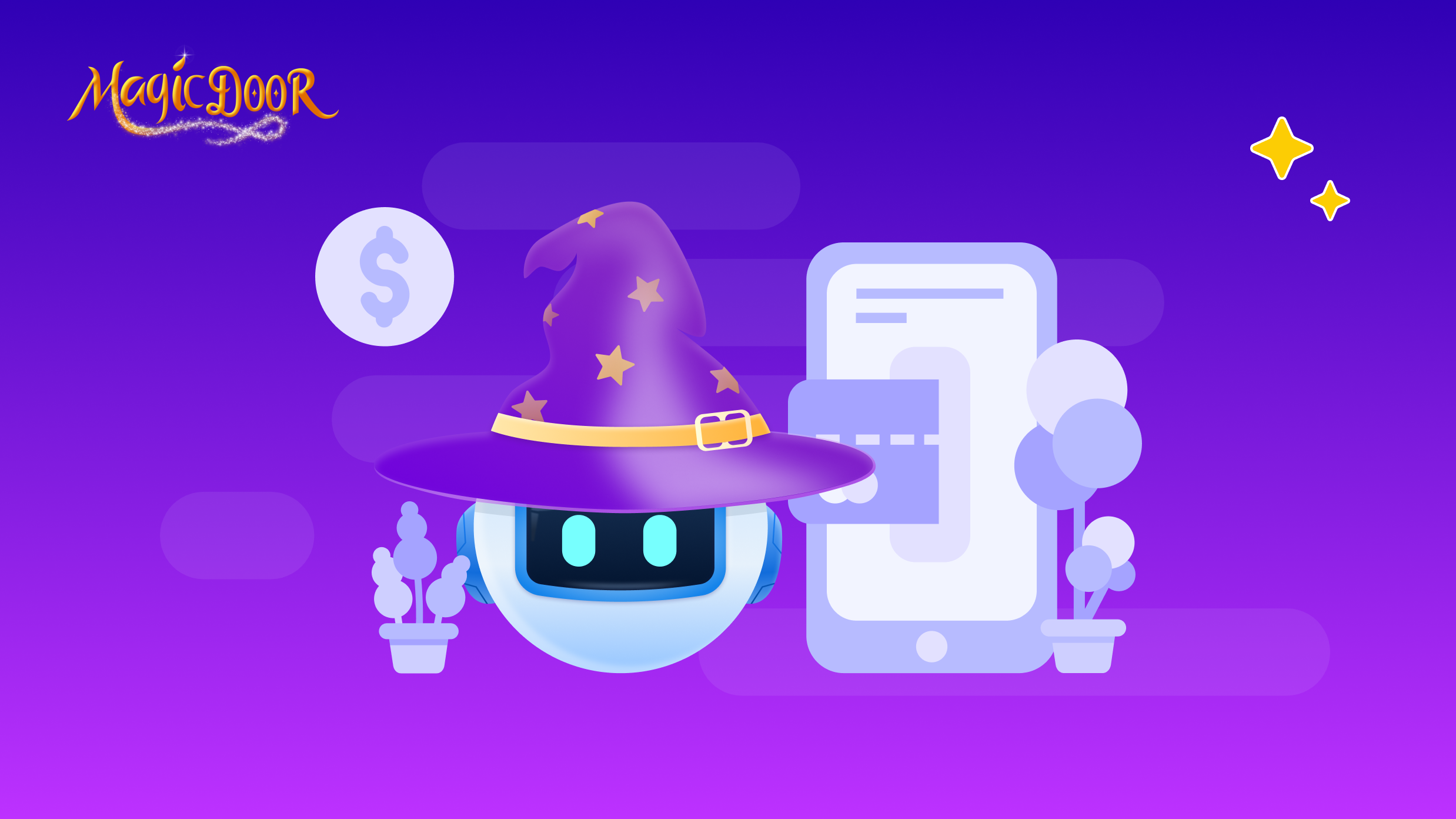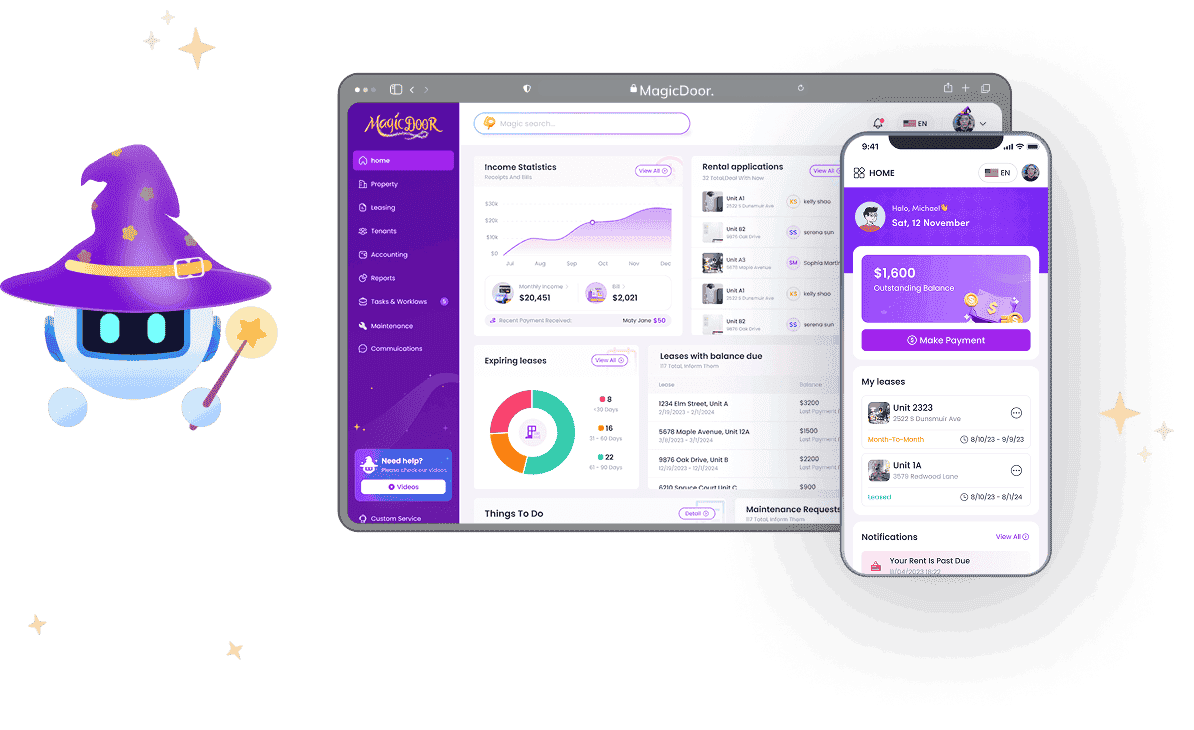Managing tenants involves much more than sending a rent reminder once a month. Today, landlords face constant demands for clear communication, timely issue resolution, and accurate record-keeping across all units.
Without a structured system, these tasks become reactive and inconsistent, leading to avoidable turnover and missed details.
The demand for property management software that simplifies tenant operations grows as portfolios expand and renter expectations rise. From payment tracking to maintenance coordination, the right platform supports both day-to-day efficiency and long-term tenant satisfaction.
In this guide, you’ll find 11 of the best tools available in 2025, the features that matter most for tenant management, and how to match each option to your specific rental type and portfolio size.
What are Tenant Management Tools?
Tenant management tools are digital systems that help property managers handle leases, rent collection, communication, and maintenance in one place.
These tools replace manual spreadsheets and disjointed apps with a centralized system supporting daily operations and long-term planning. Many include built-in features for online rental applications, lease management, rent payments, and maintenance scheduling.
Property managers use these tools to:
- Send automated rent reminders
- Receive maintenance requests online
- Track financial reports and property expenses
- Communicate with tenants in a structured, searchable interface
For landlords managing multiple rental properties or even a smaller portfolio, these platforms reduce errors, save time, and improve the overall tenant experience.
Good software simplifies the leasing process, improves cash flow, and allows you to collect rent and manage maintenance from any device. With the right setup, community associations and student housing managers benefit from stronger recordkeeping and faster response times.
Top 11 Tenant Management Software for Landlords (2025)
1. MagicDoor

MagicDoor delivers a full property management system built for landlords who want to automate tenant operations without losing visibility. Designed for residential properties and commercial properties, it centralizes rent collection, communication, and lease management in one user-friendly interface.
The platform’s automation tools help property managers stay ahead of renewals, maintenance requests, and payment tracking, making it easier to handle multiple rental properties without increasing manual work.
Landlords can collect rent online, send automatic rent reminders, and store lease agreements with e-signatures, all inside the same dashboard.
Notable features for tenant management include:
- Online portals for tenants to pay rent, submit rental house repairs, and access lease documents
- Integrated tenant screening with credit, income, and rental history checks
- Automated tracking for late fees and recurring charges
- Maintenance coordination with status updates and property images
- Digital records for all tenant communication and notices
For landlords, this means reduced time spent on follow-up and fewer missed details when managing rental applications or ongoing tenancies. Tenants benefit from a single platform where they can handle payments, requests, and inquiries without switching between tools.
MagicDoor is suitable for landlords managing anywhere from a single unit to a growing portfolio. Its balance of robust features and straightforward setup makes it ideal for owners who want automation that still keeps them connected to daily operations.
2. Buildium

Buildium is a long-standing property management software solution known for its robust back-office capabilities and strong tenant tools. It offers online rent collection, tenant screening, and full lease management, making it practical for landlords handling both residential properties and small commercial properties.
Tenant-specific capabilities include:
- Secure online payments with automated tracking
- Maintenance ticket submission through a tenant portal
- Document storage for leases and community notices
Its strength lies in combining financial reports with day-to-day tenant communication. Best suited for property managers who value accounting integrations alongside rental operations.
3. TenantCloud
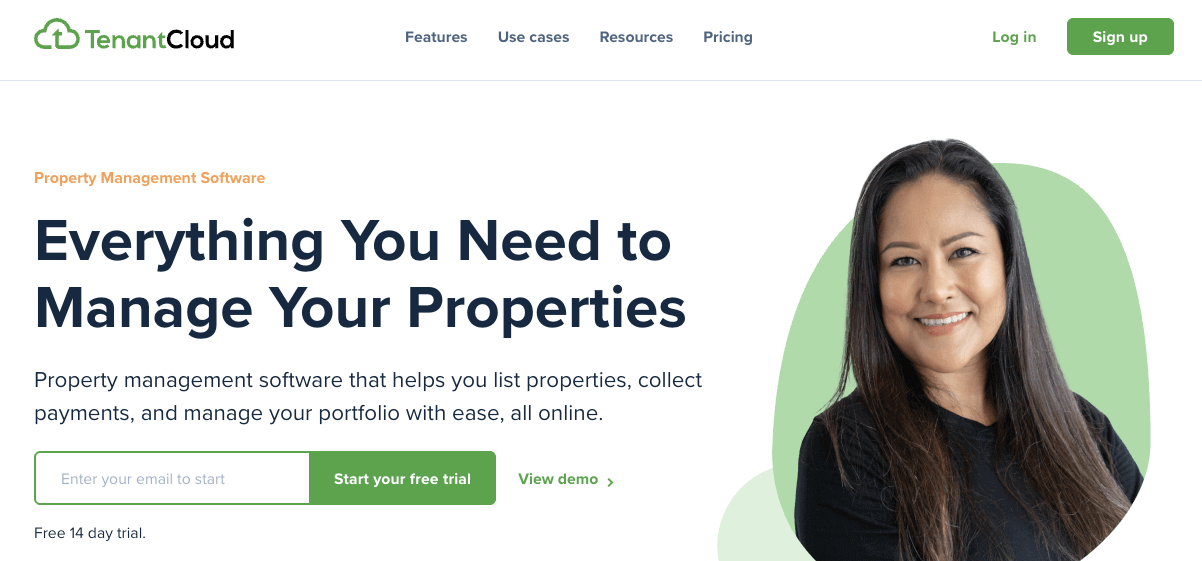
TenantCloud targets independent landlords and smaller property management companies with an accessible all-in-one platform. It supports rent collection, lease management, and screening potential tenants without requiring complex setup.
Tenant-focused features include:
- Mobile-friendly portal for rent payments and service requests
- Basic maintenance coordination with photo uploads
- Online leasing with e-signatures
The key benefit for smaller portfolios is their affordability and easy adoption. It fits real estate professionals who want essential tenant tools without the overhead of more advanced, enterprise-focused systems.
4. YardiBreeze
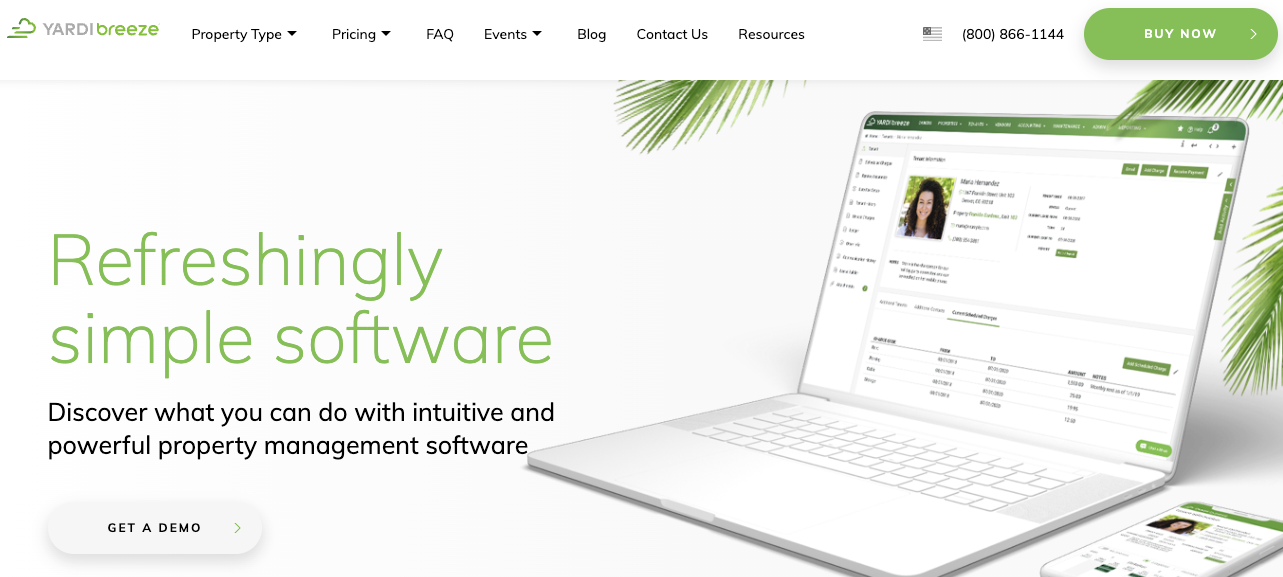
Yardi Breeze offers rental property management software with a clean user interface and strong compliance tracking. It supports tenant screening, maintenance management, and online rent collection within a single platform.
Tenant management tools include:
- Customizable online applications
- Secure payment processing, including ACH and debit card options
- Centralized request tracking with automated status updates
Yardi Breeze works well for landlords who want a balance between advanced features and a straightforward workflow. It’s a solid option for managing mixed portfolios of residential and commercial properties.
5. RentRedi
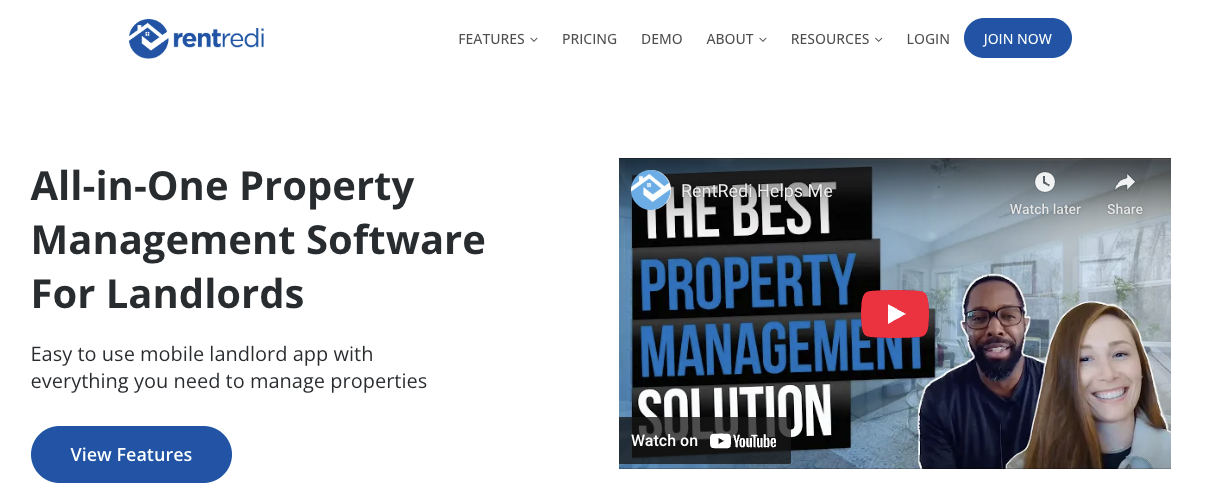
RentRedi offers mobile-first property management software built to give both landlords and tenants an easy, on-the-go experience. It supports online rent collection, tenant screening, and full lease management in a single platform.
Tenant-focused capabilities include:
- Rent payment options via ACH, debit card, or credit card
- Maintenance submission with video or image attachments
- Digital applications and e-signing for faster onboarding
Its key benefit is accessibility. The platform works well for independent property owners managing scattered rental properties who need quick, mobile communication and reliable payment processing.
6. LandlordStudio
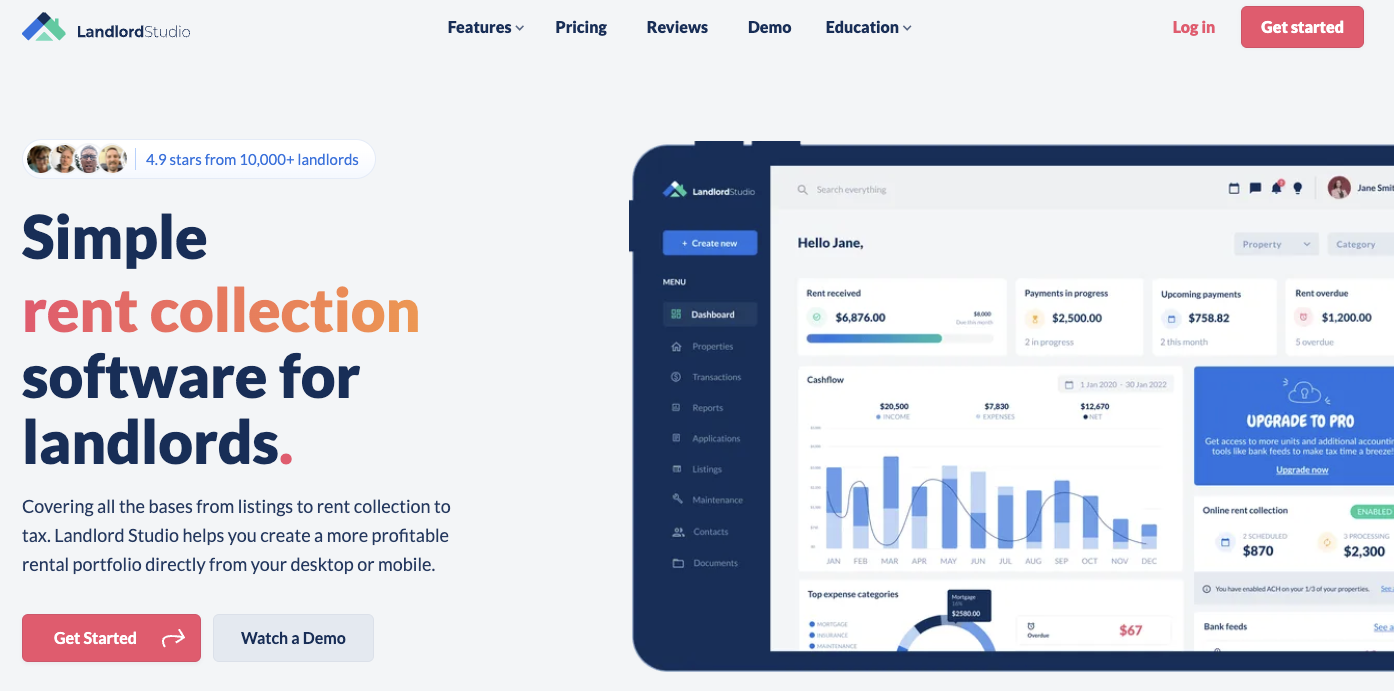
LandlordStudio provides an all-in-one platform that blends financial reports with core tenant management tools. Landlords can track rent payments, store lease agreements, and log maintenance management tasks from the same dashboard.
For tenants, the portal allows rent payment, issue reporting, and document access without contacting the landlord directly.
Best suited for smaller portfolios, it’s a practical choice for real estate professionals who value expense tracking and accounting alongside everyday tenant operations.
7. AppFolio

AppFolio is a full-featured rental property management software platform that scales from small portfolios to large property management companies. It includes tenant screening, online leasing, and automated rent collection.
Notable tenant tools:
- Customizable portals with mobile access
- Maintenance tracking with contractor coordination
- Secure online payments and recurring billing
AppFolio’s balance of advanced features and intuitive user interface makes it a fit for landlords or managers overseeing mixed residential and commercial properties, where tenant needs vary widely.
8. Innago
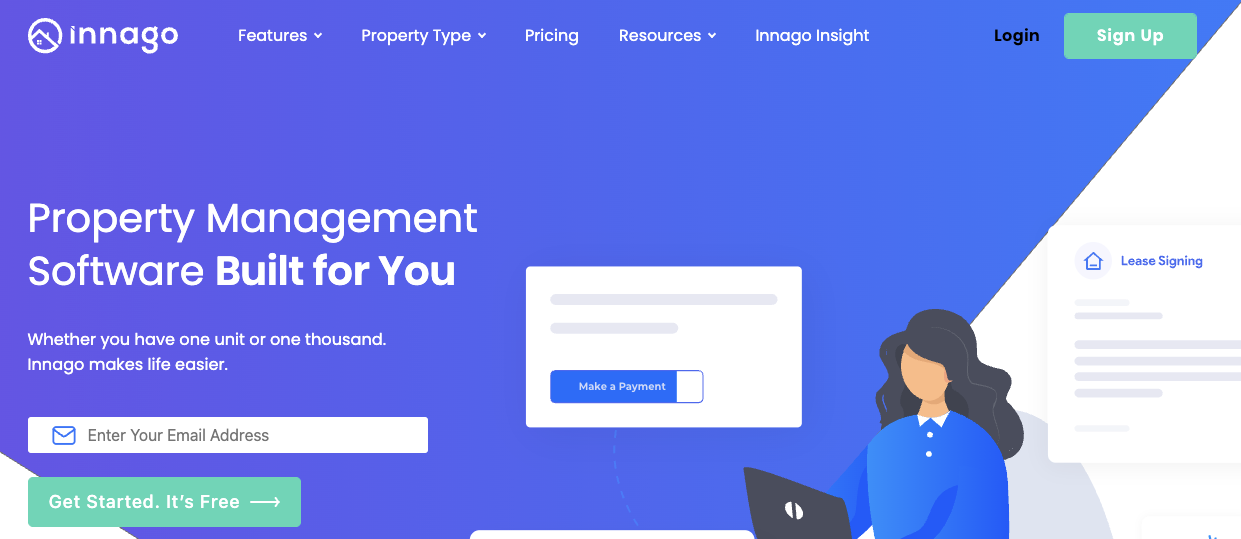
Innago offers free rental property management software that covers the essentials for tenant operations. It supports online rent collection, lease management, and tenant screening without monthly fees, making it appealing for budget-conscious landlords.
Tenant features include:
- ACH and card payment options with flexible scheduling
- Maintenance ticketing with document or photo uploads
- Secure delivery of lease agreements for digital signing
Best for small portfolios or first-time property managers who want to digitize without upfront costs.
9. TurboTenant
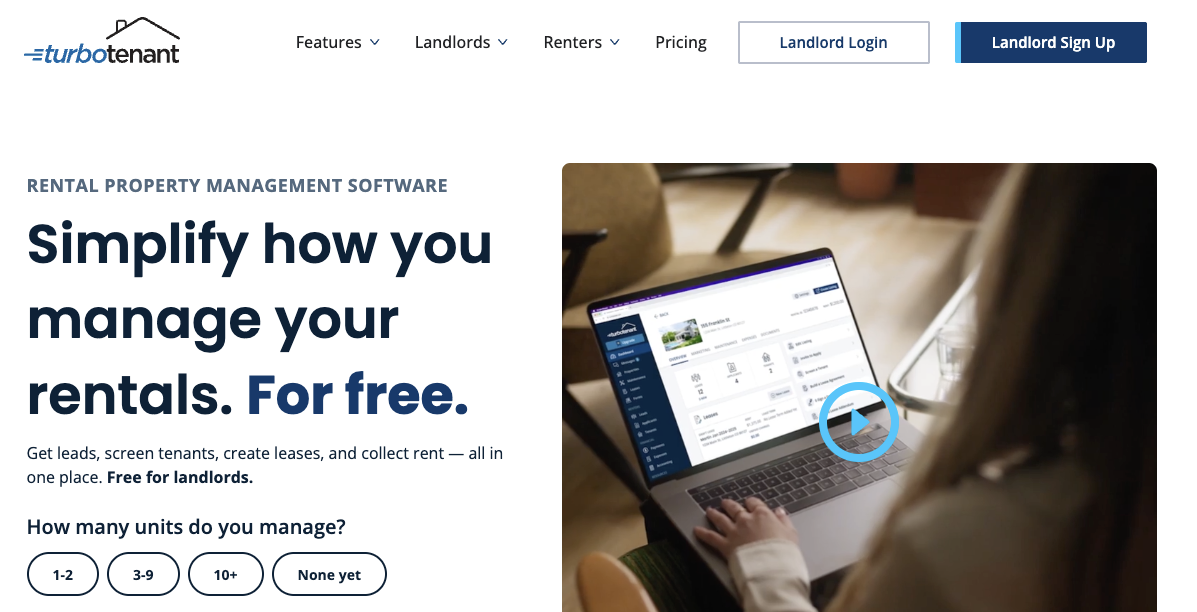
TurboTenant provides property management tools designed for independent landlords. Alongside tenant screening and online leasing, it simplifies listing syndication to attract potential tenants quickly.
For tenant management, it offers:
- Digital application and screening in one workflow
- Payment processing for rent and deposits
- Maintenance coordination through a tenant portal
It’s a fit for landlords focused on fast leasing cycles and clear communication with applicants and renters alike.
10. DoorLoop
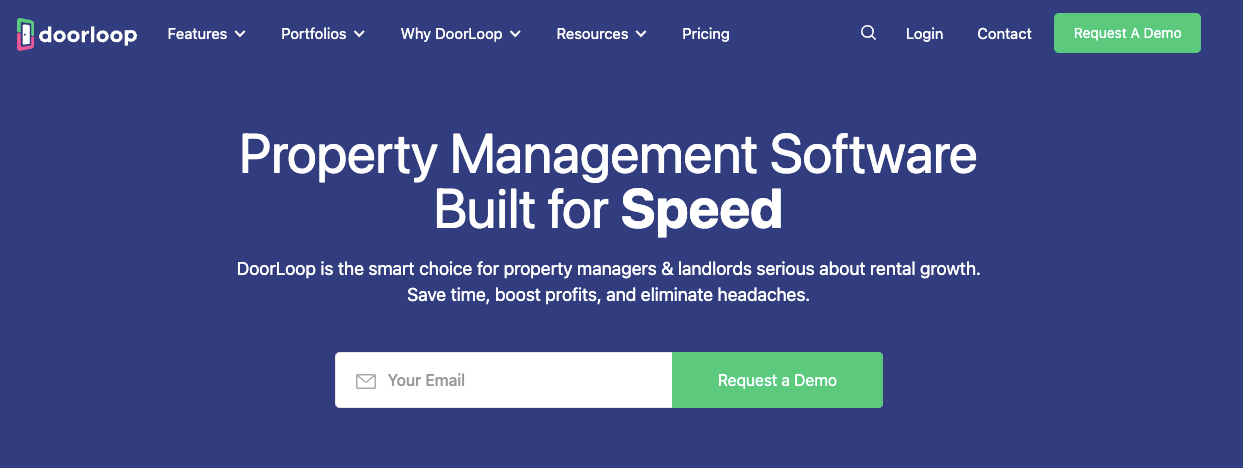
DoorLoop delivers all-in-one platform capabilities for property managers handling residential or commercial properties. Its property management software includes rent collection, lease oversight, and automated reminders for both tenants and staff.
Key tenant-facing tools include:
- Customizable portals for payments and service requests
- Maintenance scheduling with progress updates
- In-platform messaging for faster resolution of questions
Works well for property management companies managing multiple property types and needing integrated accounting, leasing, and tenant support in one system.
11. Avail

Avail offers management software tailored to small landlords seeking professional-grade tenant features. It includes online rent collection, lease management, and easy maintenance tracking.
Tenant management functions:
- Rent payment via ACH or card
- Document storage for leases and property policies
- Request submission with updates from the landlord
Best for landlords who want to maintain close tenant relationships while still benefiting from automation and consistent workflows.
Benefits of Tenant Management Automation for Landlords
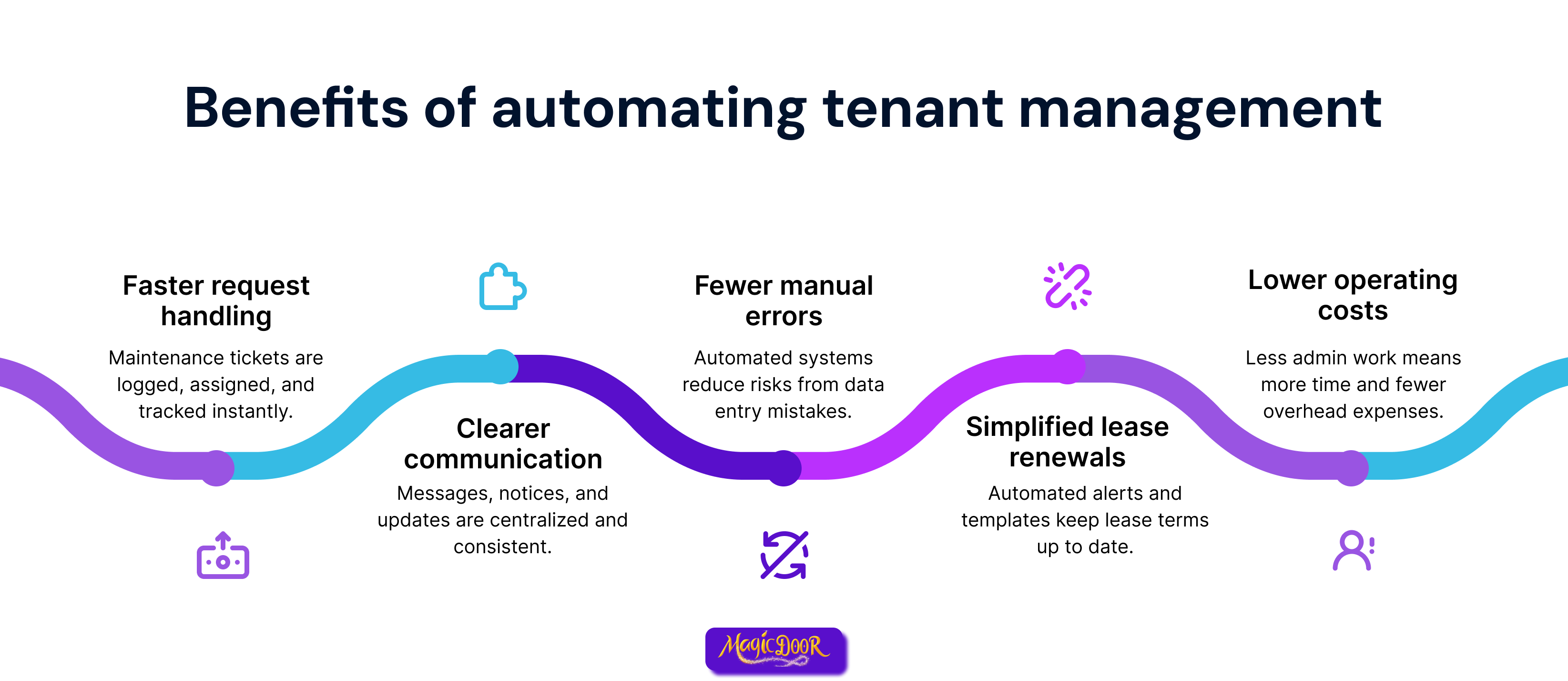
Faster Turnaround on Tenant Requests and Issues
Speed is a major factor in how tenants judge property responsiveness.
When a heating system fails or a plumbing issue arises, delays can cause discomfort, damage, and eventually, turnover.
Tenant management tools allow property managers to set up structured processes for handling issues without relying on memory, notes, or scattered messages. When a maintenance request is submitted, the system records it, assigns it, and updates its status in one place.
This structured flow helps landlords avoid gaps in communication and keep rental properties in good condition over time.
Key features supporting faster issue resolution include:
- Timestamped submission of property maintenance requests through online portals
- Status tracking is visible to the tenant and the property owner
- Clear task assignments for vendors or internal maintenance staff
- Access to past request history for recurring issues
A defined workflow reduces delays and helps prevent overlooked repairs, especially useful for those managing more than a single unit.
Consistent and Professional Communication With Tenants
Tenants expect clarity in how and when to reach their landlord. Unclear channels, delayed replies, or conflicting updates create frustration and reduce the likelihood of renewals.
With a unified property management system, all tenant messages, notices, and confirmations are logged in one interface. Whether it’s an update about lease agreements, a notice for upcoming repairs, or a payment confirmation, the tenant sees a consistent format.
For landlords, especially those running a growing property management business, this adds polish to everyday interactions and reduces manual back-and-forth.
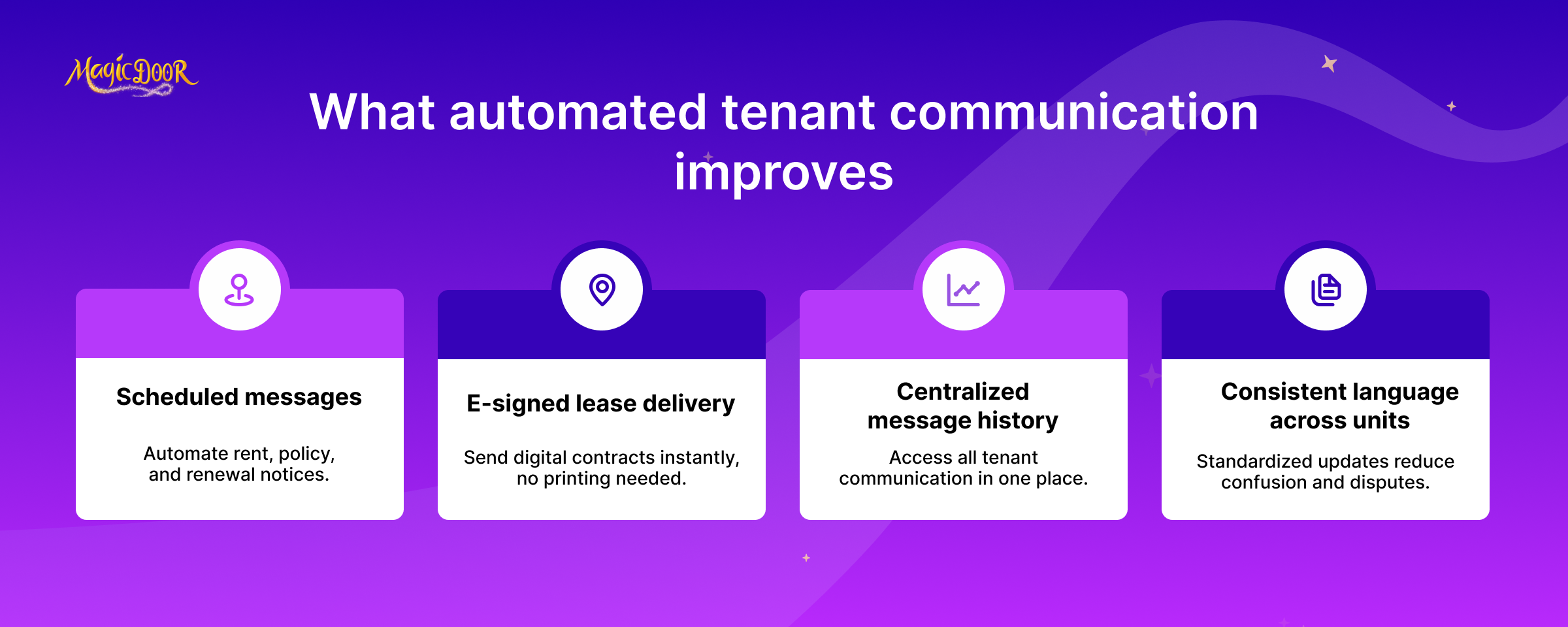
Automated communication tools typically support:
- Scheduled messages for rent collection, renewals, and policy updates
- Instant delivery of lease documents with e-signatures
- Archiving of all tenant communication for easy reference
- Language consistency in all units or property types
Providing structured communication isn’t just a convenience. It helps prevent misinterpretation, limits disputes, and contributes to a more predictable and reliable rental experience.
Accurate Record-Keeping and Fewer Manual Errors
Data entry errors can quickly create headaches, from misapplied rent payments to missed lease renewal dates. When information lives in spreadsheets, mistakes are harder to catch and undo.
Rental property management software replaces disconnected files and documents with a structured system that tracks every detail in real time. That includes rental applications, bank account connections, communication logs, and rent roll reports.
What landlords gain is not just organization, but reliability.
Here’s what accurate automation supports:
- Clean transaction history for every unit and tenant
- Secure storage of signed lease agreements with e-signatures
- Centralized logs of notices, renewals, and payment confirmations
- Built-in accounting software features for expense tracking and tax filing
For property owners handling multiple rental properties, consistency in data eliminates confusion and supports smarter financial decisions.
Streamlined Lease Renewals and Tenant Follow-Ups
Keeping leases current is one of the most critical parts of property management, but it's also one of the easiest to mishandle when reminders live in email drafts or notebooks.
Automation simplifies the renewal cycle by tracking dates, sending alerts, and generating updated lease agreements without starting from scratch. Tenants receive digital notifications, and most systems offer built-in online leasing with signing and archiving features.
This removes guesswork and reduces delays that could lead to vacancies.

Key automations that support this process include:
- Pre-scheduled automatic reminders for lease expirations
- Editable templates for fast contract generation
- Digital delivery and acceptance with user-friendly interfaces
- Status tracking across multiple property listings
Landlords who respond to renewals on time, and follow up with clear next steps, see better tenant retention and smoother transitions between terms.
Lower Operational Costs and Better Use of Your Time
Manual admin work takes up time that landlords could be using to improve properties, grow their portfolios, or focus on strategic planning.
Transitioning to property management software reduces time spent chasing late fees, sending out documents, or logging payment data. Many platforms consolidate features, such as rent collection, tenant screening, and maintenance management, into one login, so there's no need to manage multiple subscriptions.
Operational overhead shrinks without sacrificing visibility or control.
Automation supports lower cost in areas like:
- Third-party admin support or virtual assistant hours
- Missed charges, late fees, or delays in collecting rent
- Time spent onboarding prospective tenants
- Rework caused by miscommunication or document errors
Whether managing smaller portfolios or scaling across commercial properties, automation brings structure to the repetitive tasks that often slow growth.
What Features Should Landlords Look for in Tenant Software?
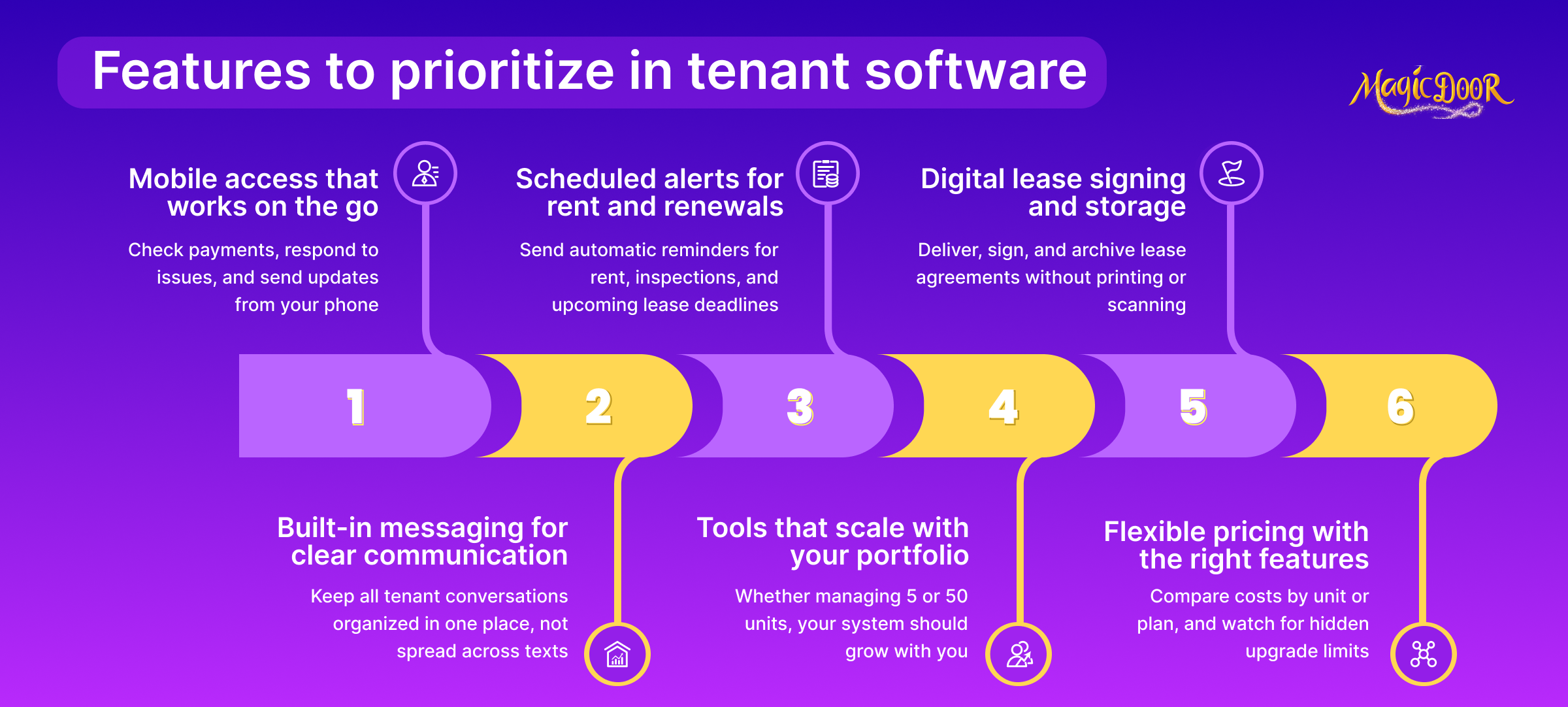
Is Mobile Access Important for Tenant Management Tools?
Mobile functionality gives landlords real control over operations, especially when handling time-sensitive updates. Checking rent payments, reviewing lease agreements, or responding to maintenance requests should never depend on access to a desktop.
A well-built mobile interface allows property managers to stay responsive from any location.
Reviewing rental applications, sending follow-ups, and tracking issues directly from a phone or tablet helps reduce lag across daily tasks.
Tenants also benefit from mobile tools that allow them to:
- Pay rent through secure online portals
- Upload service issues with attached property images
- Receive real-time alerts for appointments or policy changes
Landlords working with multiple rental properties, or even running a smaller portfolio, need that flexibility. Mobile access supports managing every aspect efficiently.
Does the Software Offer Easy Tenant Communication Options?
Strong communication is a core part of good property management. Without a structured system, messages get buried, responses are delayed, and small problems grow into avoidable disputes.
Tenant communication features built into property management software make it easy to stay organized, clear, and consistent. Each message, update, or reminder is logged within the same system that handles rent collection, lease management, and unit data.
Features worth prioritizing:
- Central messaging hub tied to tenant profiles
- Scheduled notices for automatic rent reminders, inspections, or repairs
- Message tracking that allows full visibility for both parties
Easy communication improves tenant satisfaction, reduces missed updates, and gives property owners a more professional and reliable system for daily interaction, something that matters more as portfolios grow or tasks scale.
How Much Does Tenant Management Software Cost?
Pricing models for tenant management software vary widely depending on features, support levels, and portfolio size. Some providers charge monthly fees per unit, while others offer free tools with optional upgrades.
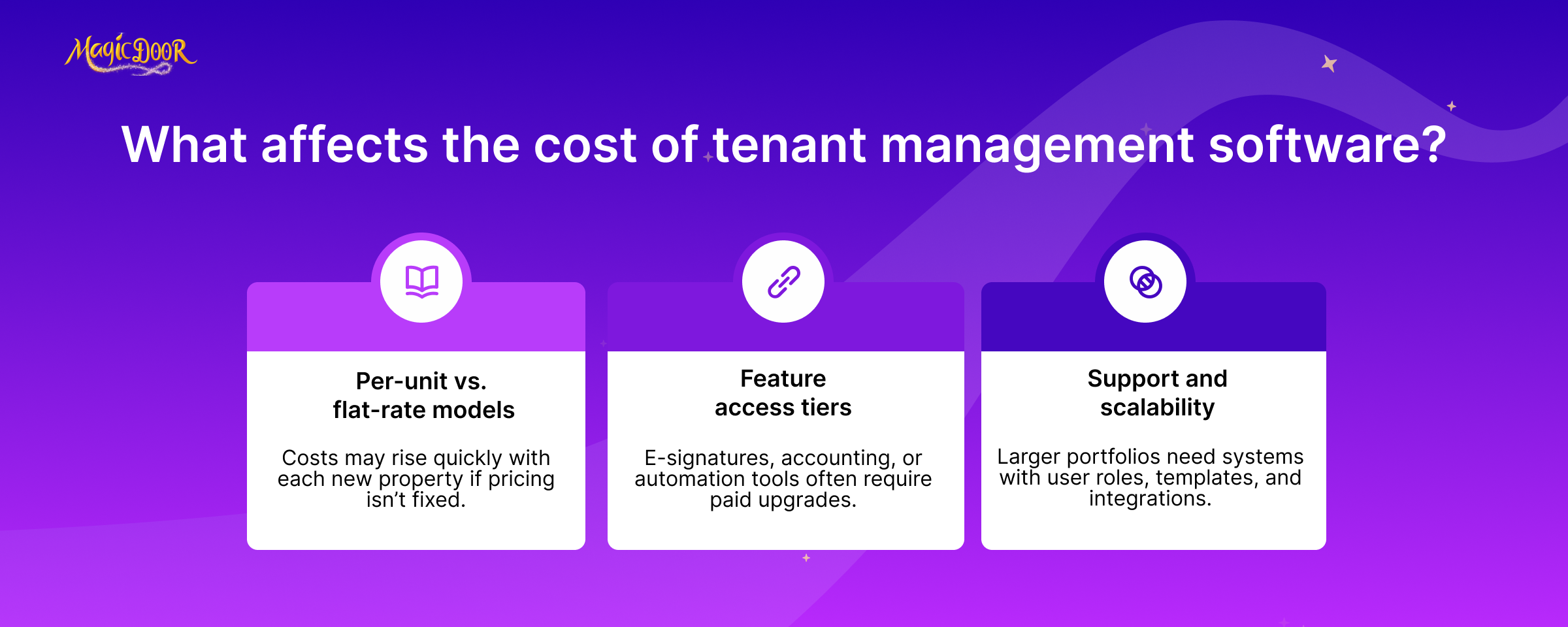
Landlords should evaluate the cost in relation to the time and errors the software helps eliminate. A free tool with limited functionality may suffice for simple portfolios, but growing operations benefit from advanced features like maintenance management, online rent collection, or integrated accounting software.
Key cost factors to compare:
- Per-unit pricing vs. flat-rate plans
- Access to e-signatures, automatic rent reminders, or reporting dashboards
- Inclusion of ACH processing or debit card fees
- Support for multiple property types or user accounts
Choosing the right property management software means prioritizing long-term efficiency, accuracy, and support over low upfront cost.
Can the Platform Scale With My Rental Portfolio?
Software that works for five units may fall short once you’re managing fifty. Growth exposes weak systems, especially those built around disconnected spreadsheets or basic scheduling apps.
A scalable property management system handles growth without adding complexity. It organizes tenant data, streamlines lease oversight, and automates repetitive tasks, even as your portfolio size expands.
Scalable tools often include:
- Tiered permissions for team-based access across rental properties
- Templates for lease agreements, notices, and recurring messages
- Custom reports that adapt to different property types
- Reliable support as your needs evolve
For landlords planning to expand or who already manage a mix of residential and commercial properties, selecting software built to scale protects their workflows from breaking under pressure.
Conclusion
Tenant management software in 2025 has become a core part of running any rental operation efficiently. The ability to handle rent collection, service requests, and communication from a single all-in-one platform frees landlords from repetitive admin work and reduces errors that can harm tenant relationships.
MagicDoor stands out as a smart choice for landlords seeking hands-off, automated handling of tenant requests, payments, and lease updates without sacrificing control.
If you’re ready to simplify your daily workload and create a more reliable tenant experience, try MagicDoor today!
